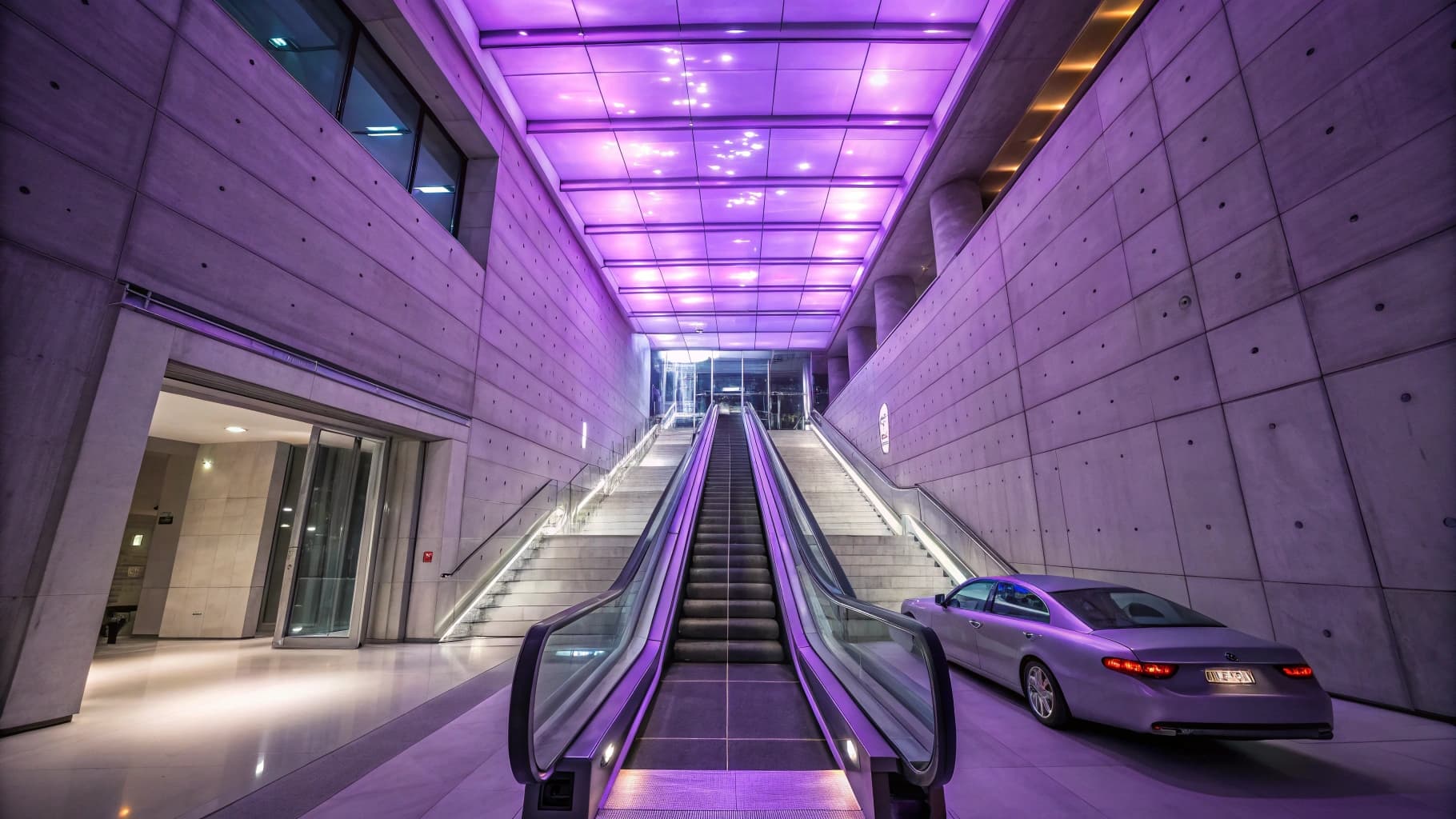Underground homes, often referred to as earth-sheltered or subterranean dwellings, have gained traction in recent years as innovative architectural solutions that blend seamlessly with the natural environment. These unique structures are built partially or entirely below ground level, utilizing the earth’s natural insulation properties to maintain a stable internal temperature. The concept of living underground is not new; ancient civilizations, such as the troglodytes in Cappadocia, Turkey, and the cliff dwellers of the American Southwest, have long utilized subterranean spaces for shelter.
However, modern advancements in engineering and design have transformed underground living into a luxurious and appealing option for those seeking privacy, security, and a connection to nature. The allure of underground homes extends beyond mere aesthetics; they offer a unique lifestyle that caters to the desires of individuals who prioritize sustainability, energy efficiency, and innovative design. As urban areas become increasingly congested and property prices soar, the idea of retreating below the surface presents an intriguing alternative.
For billionaires, who often seek exclusivity and privacy, underground homes provide a sanctuary away from the prying eyes of the public and media. This article delves into the appeal of underground living for billionaires, exploring its advantages, challenges, notable examples, environmental benefits, and its potential future in luxury real estate.
The Appeal of Underground Living for Billionaires
For billionaires, the appeal of underground living is multifaceted. One of the primary attractions is the unparalleled privacy that these homes offer. Nestled beneath the surface, these residences are often shielded from the public eye, allowing their owners to enjoy a lifestyle free from scrutiny.
This seclusion is particularly appealing to high-profile individuals who may be subject to constant media attention or unwanted intrusions. The ability to retreat into a private sanctuary can be a significant draw for those who value their personal space and security. Moreover, underground homes can be designed to incorporate cutting-edge technology and luxurious amenities that rival traditional mansions.
With the right architectural vision, these subterranean spaces can feature expansive living areas, state-of-the-art entertainment systems, and even indoor gardens that create a serene atmosphere. The juxtaposition of modern luxury with the natural elements of earth-sheltered living can result in a unique aesthetic that appeals to billionaires looking for something beyond conventional opulence. The ability to customize these homes to reflect personal tastes while maintaining a connection to nature adds another layer of appeal.
Advantages of Underground Homes for Billionaires
The advantages of underground homes extend beyond privacy and aesthetics; they also encompass practical benefits that align with the lifestyles of billionaires. One significant advantage is energy efficiency. Earth-sheltered homes benefit from the natural insulation provided by the surrounding soil, which helps regulate indoor temperatures year-round.
This insulation reduces reliance on heating and cooling systems, leading to lower energy costs and a smaller carbon footprint. For billionaires who are increasingly conscious of their environmental impact, this aspect of underground living can be particularly appealing. Additionally, underground homes often boast superior structural integrity compared to traditional above-ground constructions.
The earth surrounding these homes provides natural protection against extreme weather events such as hurricanes or tornadoes. This resilience can be a crucial factor for billionaires who may own properties in regions prone to such natural disasters. Furthermore, the unique design possibilities offered by underground living allow for creative landscaping options that can enhance the overall aesthetic appeal while providing additional outdoor space in the form of courtyards or green roofs.
Challenges and Considerations for Building Underground Homes
While the advantages of underground homes are compelling, there are also significant challenges and considerations that must be addressed during the planning and construction phases. One of the primary concerns is water management. Building below ground level necessitates careful consideration of drainage systems to prevent water infiltration and potential flooding.
Proper waterproofing techniques must be employed to ensure that the home remains dry and comfortable over time. This aspect requires collaboration with experienced architects and engineers who specialize in subterranean construction. Another challenge is ventilation and air quality.
Underground homes can sometimes suffer from poor air circulation due to their enclosed nature. To combat this issue, advanced ventilation systems must be integrated into the design to ensure a constant flow of fresh air while maintaining energy efficiency. Additionally, natural light can be limited in underground spaces, necessitating creative solutions such as skylights or light wells that allow sunlight to penetrate deeper into the home.
These considerations require careful planning and investment but are essential for creating a comfortable living environment.
Examples of Billionaires with Underground Homes
Several billionaires have embraced the concept of underground living, showcasing its potential as a luxurious lifestyle choice. One notable example is Larry Page, co-founder of Google, who reportedly owns an underground home in Palo Alto, California. This residence features advanced technology and sustainable design elements that reflect Page’s commitment to innovation and environmental responsibility.
The home is designed to blend seamlessly with its surroundings while providing an oasis of privacy. Another prominent figure is entrepreneur and inventor Elon Musk, who has expressed interest in building underground homes as part of his vision for sustainable living. Musk’s fascination with subterranean architecture aligns with his broader goals of reducing humanity’s impact on the planet through innovative solutions.
His ideas have sparked discussions about the future of housing and how underground living could play a role in addressing urbanization challenges.
Environmental and Sustainability Benefits of Underground Living
Reduced Energy Consumption
One of the most significant advantages of underground living is the reduced energy consumption. Earth-sheltered homes maintain stable temperatures due to their natural insulation properties, leading to lower heating and cooling costs. This energy efficiency not only benefits homeowners financially but also contributes to a reduction in greenhouse gas emissions associated with traditional heating and cooling methods.
Sustainable Design and Technologies
Underground homes can be designed with sustainable materials and technologies that further enhance their eco-friendliness. For instance, many earth-sheltered homes incorporate renewable energy sources such as solar panels or geothermal heating systems. These features allow homeowners to generate their own energy while minimizing their reliance on fossil fuels.
Promoting Biodiversity and Supporting Local Ecosystems
Furthermore, by utilizing natural landscaping techniques such as green roofs or native plant gardens, these homes can promote biodiversity and support local ecosystems.
The Future of Underground Homes for Billionaires
As urbanization continues to accelerate and environmental concerns become more pressing, the future of underground homes for billionaires appears promising. The increasing demand for privacy and security among high-net-worth individuals may drive further interest in subterranean living solutions. Architects and designers are likely to continue exploring innovative ways to create luxurious underground spaces that cater to this demographic’s desires while addressing practical challenges.
Moreover, advancements in construction technology may make building underground homes more feasible and cost-effective than ever before. Techniques such as 3D printing and modular construction could streamline the building process, allowing for greater customization and efficiency in creating these unique residences. As societal attitudes toward sustainability evolve, it is likely that more billionaires will consider underground living not only as a lifestyle choice but also as a responsible investment in the future.
The Unique Lifestyle of Billionaires with Underground Homes
The lifestyle of billionaires who choose to live in underground homes is characterized by a blend of luxury, privacy, and sustainability that sets them apart from traditional residential experiences. These unique dwellings offer an escape from the chaos of urban life while providing an opportunity for innovative design and environmental stewardship. As more affluent individuals recognize the benefits of subterranean living—ranging from energy efficiency to enhanced security—the appeal of these homes is likely to grow.
In an era where environmental consciousness is becoming increasingly important, underground homes represent a forward-thinking approach to luxury living that aligns with contemporary values. As architects continue to push the boundaries of design and technology, it is clear that underground homes will play an integral role in shaping the future landscape of high-end real estate for billionaires seeking both exclusivity and sustainability in their lifestyles.
FAQs
What are underground homes?
Underground homes are residences that are built partially or entirely below ground level. They are designed to utilize the earth’s natural insulation and thermal mass to maintain a comfortable temperature inside.
Why do some billionaires choose to build underground homes?
Some billionaires choose to build underground homes for reasons such as privacy, security, energy efficiency, and environmental sustainability. Underground homes can also offer protection from natural disasters and extreme weather conditions.
What are the advantages of underground homes for billionaires?
Advantages of underground homes for billionaires include increased privacy, reduced environmental impact, lower energy costs, and the ability to incorporate advanced security features. Additionally, underground homes can provide a unique and luxurious living experience.
What are the challenges of building underground homes for billionaires?
Challenges of building underground homes for billionaires include the high initial construction costs, potential difficulties in obtaining permits, and the need for specialized engineering and design expertise. Maintenance and ventilation can also be more complex for underground homes.
Are underground homes a growing trend among billionaires?
While underground homes are not yet a widespread trend among billionaires, there is a growing interest in these unique and innovative residential structures. As concerns about privacy, security, and sustainability continue to rise, more billionaires may consider building underground homes in the future.

